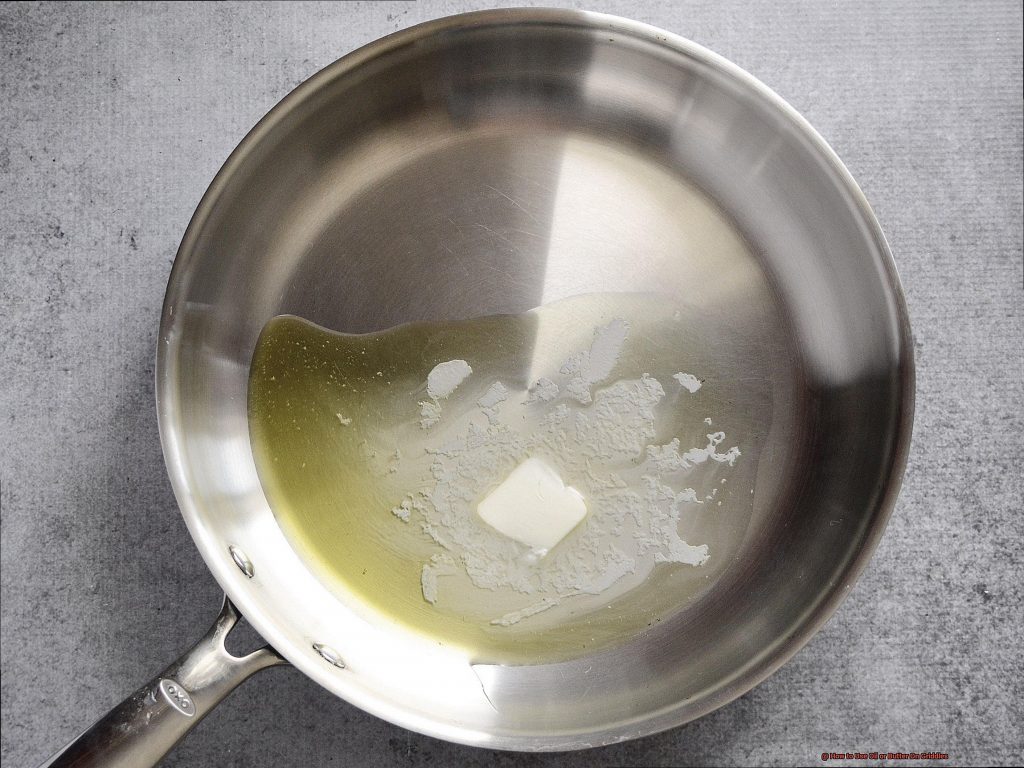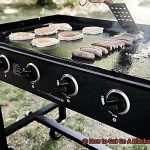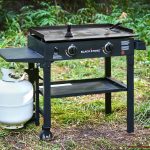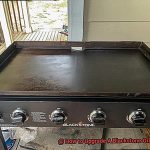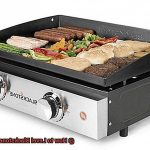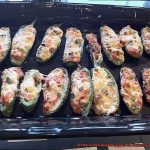Are you looking for a guide to using oil or butter on griddles? You’ve come to the right place. Griddle cooking can be intimidating, but with the right tips and tricks, it’s easy and enjoyable.
Here, we’ll cover everything you need to know about griddle cooking – from how much oil or butter to use to seasoning your griddle.
So get ready for some delicious meals. Gather your favorite cooking tools and let’s get started.
Contents
Why Use Oil or Butter on a Griddle?
Cooking up a storm on a griddle is a great way to whip up delicious meals, but don’t forget to use oil or butter for the best results. This helps create a non-stick surface so your food won’t stick or burn, and adds an extra layer of flavor.
Plus, it’ll keep your griddle clean and free of buildup.
Not to mention the golden color it gives the cooked food.
So don’t forget to add some oil or butter before you start cooking – it’s like pouring love into every meal.
Types of Oils and Butters to Use on a Griddle
Griddle cooking is a skill that requires the right fat to make your dishes come to life.
From vegetable oil to butter, there are plenty of options to choose from.
Vegetable oil is a great choice for those looking for an inexpensive and neutral-tasting option.
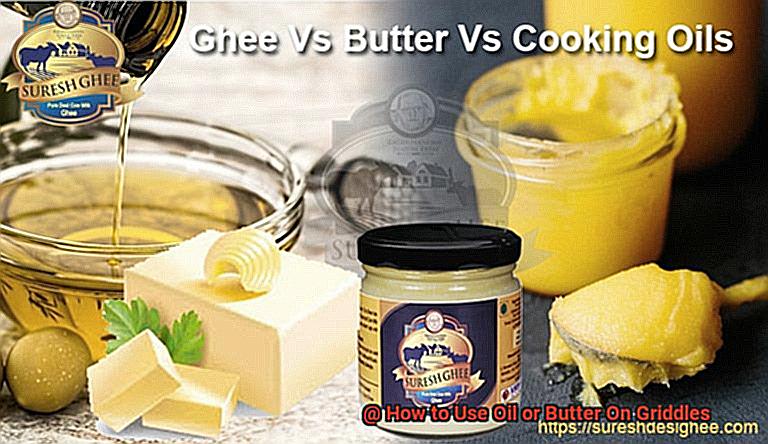
It’s like a blank canvas – you can create whatever flavors you like without overpowering the dish.
Olive oil is another popular choice as it adds a robust flavor and health benefits.
Coconut oil is ideal for something a little different as it has a high smoke point and adds subtle sweetness to dishes.
Butter can be used to add flavor and prevent sticking on the griddle.
It’s like painting in bright colors – it brings out the best in your dish.
How to Properly Apply Oil or Butter to a Griddle
Preheat and Prepare
Preheating the griddle to the desired temperature is an essential step in properly applying oil or butter to a griddle.
This will ensure that the oil or butter is evenly distributed and that it adheres well to the griddle’s surface, creating the perfect canvas for your culinary masterpiece.
Get Greasy
Now it’s time to start using your oil or butter.
To do this, spread a paper towel or brush over the griddle’s surface, making sure to coat all areas of the griddle with oil or butter and thinning it evenly.
If you are using butter, make sure it is melted first for best results.
Heat It Up
Let your griddle heat up before adding food; too much heat may cause cooking or charring of food; too little heat can result in sticking and uneven cooking.
Monitor your griddle’s temperature as you cook for optimal results and adjust as needed for perfect outcomes every time.
Clean Up
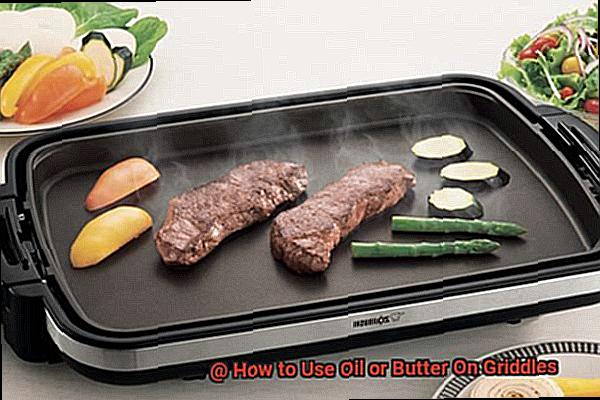
Allow your griddle to cool before scrubbing it with a damp cloth or sponge and warm soapy water solution; avoid using harsh chemicals or abrasive products as this will damage your griddle’s surface over time.
Cleaning up after a good meal is just as important as preparing one.
Enjoy Your Meal
Now that you’ve preheated, greased, cooked, and cleaned, it’s time to enjoy your delectable dish. A well-oiled (or buttered) grill will ensure that your food is cooked evenly without sticking, so relax, sit back, and savor every bite.
Do You Put Oil on a Blackstone Griddle Before Cooking?
Before you start cooking on your Blackstone griddle, make sure to prepare the surface with oil.
This will help prevent sticking and ensure an even heat distribution.
When it comes to choosing an oil, vegetable oil, olive oil, and coconut oil are all great options.
Apply the oil using a paper towel or brush so that it coats the griddle without pooling in any one area.
Once you’ve applied the oil, turn on the griddle and let it preheat for about ten minutes before adding food.
This will help ensure that your food cooks evenly and that no food sticks to the counter.
Can You Use Oil on a Griddle Without It Smoking?
Are you a griddle enthusiast? Do you love cooking up hearty meals without all the fuss? If so, you know that using oil can be daunting.
You don’t want your griddle to start smoking and ruin your dish. But don’t worry – it is possible to use oil on a griddle without it smoking.
The key is to choose the right type of oil for your griddle.
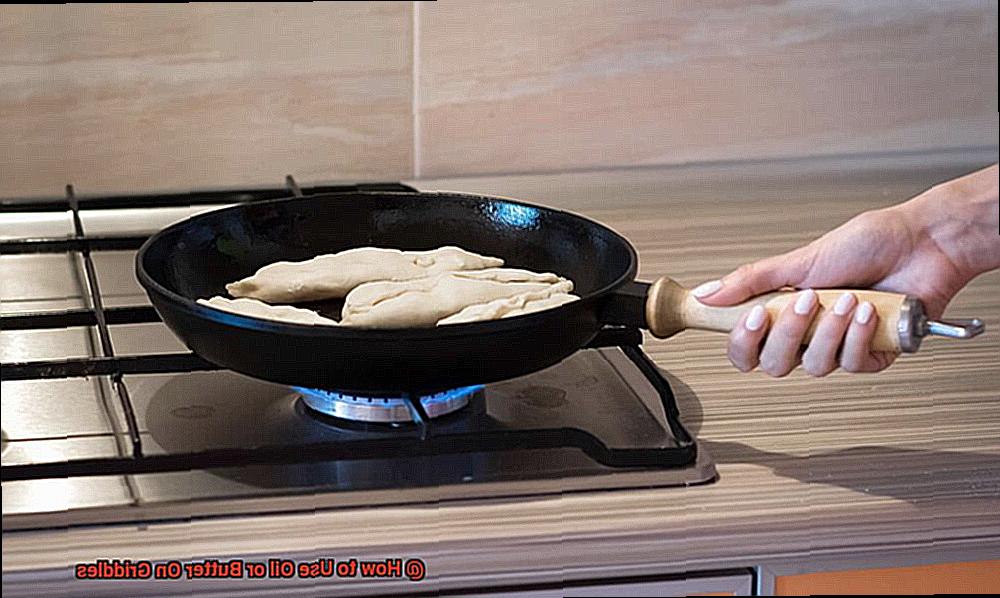
Vegetable oils such as canola and olive oil are great options because they have a high smoke point.
When heating the oil, start with a low-medium heat setting and gradually increase the temperature until you reach the desired cooking temperature.
Butter or margarine are also good alternatives to oil on your griddle.
However, they will not smoke as easily as oil, so make sure you heat them slowly and evenly.
Finally, keep an eye on your food while cooking as some ingredients may cause more smoke than others.
For instance, if you’re making something with a lot of sugar, it will produce more smoke than other foods – so be sure to adjust your heat accordingly.
Is it OK to Use Butter on a Griddle?
Griddle cooking is a delicate dance, and the right partner makes all the difference.
Butter is an ideal choice for your griddle, as it has a high smoke point and adds a delicious flavor to your food.
Plus, it can be used to lubricate the surface of the griddle and prevent sticking.
However, be sure to keep the heat setting low; if it gets too hot, butter will burn.
If you’d rather avoid this risk altogether, oil is a great alternative – it has an even higher smoke point and won’t burn as easily.
Butter may seem intimidating on a griddle, but don’t be afraid. With its creamy texture and tantalizing flavor, butter can really elevate your dish.
Plus, if you use the right heat setting, you won’t have to worry about burning your masterpiece.
How Do You Clean Grease From a Griddle After Using Butter or Oil?
Cleaning a griddle after using butter or oil doesn’t have to be complicated.
In just a few simple steps, you can make your griddle look like new again.
Start by scraping off any leftover food or grease from the griddle with a metal spatula.
Peel away the layers of grease like an onion – the more you scratch, the closer you get to that clean surface underneath.
Next, heat the griddle to medium-high heat and let it sit for a few minutes.
This will help loosen up any remaining grease or food particles, making them easier to remove.
Once everything has been loosened, use a brush to scrub off any remaining grease and food particles from the griddle.
Don’t forget all those nooks and crannies that are impossible to reach.
After scrubbing, wipe down the griddle with a damp cloth to remove any remaining dirt.
Consider this as your griddle’s deep rinse before storing it away for next time.
Finally, finish up by spraying the griddle with non-stick cooking spray and wiping it down with a clean cloth. This will give your griddle that extra shine for all of your future cooking adventures.
Tips for Maintaining Your Griddle When Using Butter or Oil
Maintaining your griddle when using butter or oil is an essential part of a healthy and safe cooking experience.
With the right care and attention, you can keep your griddle in top condition and enjoy delicious meals cooked on it for years to come.
Here are some tips on how to maintain your griddle when using butter or oil.
Clean After Each Use
To prevent buildup of oil or butter residue, clean the griddle after each use.
Use a non-abrasive cleaner, such as a soft cloth or paper towel, to wipe down the entire surface of the griddle.
This will help make sure that there are no food particles or grease left on the surface which could result in sticking and burning of food.
Spread Evenly
To spread oil or butter over the surface of the griddle evenly, use a paper towel or cloth.
Doing so will help prevent splattering when cooking and ensure that food does not stick to the griddle’s surface.
If you’re using butter, make sure it is melted before spreading it on the griddle as this will reduce sticking and ensure even coverage.
Temperature Control
It is also important to control the temperature when using butter or oil.
Make sure that the oven does not get too hot as this can result in burning of food or oil/butter residue on the surface of your griddle.
Store Correctly
When not in use, store your griddle in a cool, dry place such as a cupboard or pantry away from direct sunlight and any heat sources such as ovens or stoves.
This will help ensure that your griddle stays in good shape for longer stretches of time.
Conclusion
Griddle cooking doesn’t have to be intimidating.
With the right tips and tricks, you can make your experience a success. When it comes to oil or butter, use what you prefer – vegetable oil, olive oil, coconut oil, or butter – each one will bring its own unique characteristics to your dish.
Just remember: preheat and distribute evenly, maintain temperature control, and store correctly for optimal results every time.

